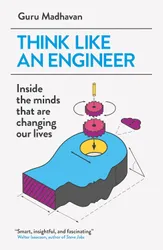In the modern world, where almost every area of our lives is influenced by the technology we use, engineering plays a hugely important role. This book aims to explore what it takes to invent new technology, to solve problems, and to bring effective products into existence.
One topic discussed early in the book, of particular relevance to a website about science such as this one, is the difference between science and engineering:
If the core of science is discovery, then the essence of engineering is creation.
Primarily, the book uses real-world examples to convey various aspects of the engineering mindset that are important in creating new things. These include concepts like prototyping (building a crude version to get early feedback and to make sure it works as expected), mixing and matching (bringing in ideas from other areas to assemble a hybrid solution for your particular problem), and the value of constraints to shape a solution. Real-world examples include the development of powered flight, barcodes for tracking both rail freight carriages and products in supermarkets, and digital photography.
Having occasionally had the job title of “software engineer” during my career, I could relate to many of the examples and design decisions that the book discusses. I particularly liked the checklist for innovation that is provided, which could be useful within organisations or for personal projects where some engineering is required.
There are times when the book doesn’t delve into the negative impact of some of the engineering solutions discussed. For example, it talks about the invention of the disposable nappy as a positive thing that made life easier for parents, but doesn’t discuss the huge amounts of waste that are being sent to landfill as a result.
However, the book does discuss what it calls “moon and the ghetto” problems. This is the idea that we’ve managed to put humans on the moon, but have not yet solved the problems of poverty and suffering here on planet earth. The book discusses this problem thoughtfully, and compares the types of problem that engineers can solve versus those that have many more social and emotional aspects (like poverty) that are much more difficult to solve.
The examples cover a wide range of engineering areas, and are clear and well-explained. However, I think the book uses too many examples in a superficial way, rather than diving more deeply into any particular example or topic. Except for the checklist mentioned above, I am not sure how useful it would be for anyone who actually wanted to be an engineer, nor would it provide any skills or ways of looking at the world that could be transferred to everyday life.
The book is well written and I found it easy to read. But ultimately I didn’t get an awful lot out of this book. It felt quite shallow and I didn’t really get much of a sense of what it’s like to be an engineer.
